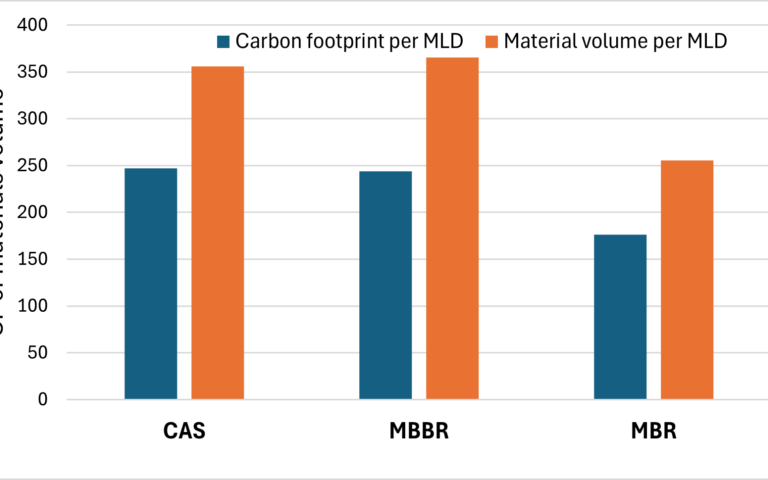Submerged aerated filter and Biological aerated filter technologies

SAF and BAF technologies
Submerged aerated filters (SAFs) and biological aerated filters (BAFs) are both 'fixed-film' media-based biological treatment processes using packed (i.e. essentially immobile) media beds which support a biofilm. They are similar in design, the key difference being in the method of removal of the biomass:
- For SAFs the surplus biomass sloughs from the filter and is removed by downstream sedimentation
- For BAFs the surplus biomass is removed by periodic backwashing.

SAFs
The SAF has a 1−4 m deep bed of filter media which acts as a substrate for the biomass (or biofilm). The bed is aerated both to promote efficient mixing of the effluent and to maintain the biofilm thickness by encouraging the sloughing off of the excess biomass, which is then settled out in a downstream tank.
Variants of the SAF process comprise:
- Combination system, comprising: (i) an upstream aerated compartment filled with a random particulate medium restrained by a mesh across the outlet of the chamber, and (ii) a downstream chamber, also aerated, containing a modular plastic medium.
- Loop reactor system, based on: a circular tank fitted with a central riser pipe with an aerator mounted centrally beneath it; the upflow of air lifts the wastewater up through the riser pipe before falling down through the annular space within the tank and through the media.
- Compartmentalised system, using: a compartmentalised tank where the effluent flows sequentially upwards and downwards through neighbouring chambers, the aerators being placed at the base of alternating media-filled chambers to promote upwards flow.
BAFs
The biological aerated filter (BAF) has a 2−3 m deep bed of media of smaller dimensions to the SAF media providing a higher surface area on which to grow the biofilm. The filter bed is submerged and settled wastewater is pumped either upwards or downwards through the filter. The bed is aerated to provide air to the biofilm, as with the SAF. However, for the BAF, aeration during the filtration cycle is not intended to dislodge the biofilm but only to feed oxygen to it.
Trapped solids and a growing biomass gradually block the filter pathways and these obstructions are periodically cleared by air-scouring or backwashing the media bed with treated effluent. The waste backwash water is held in a well and either returned to the inlet of the BAF plant or fed to a primary sedimentation tank, if one is fitted, to separate the biomass.







